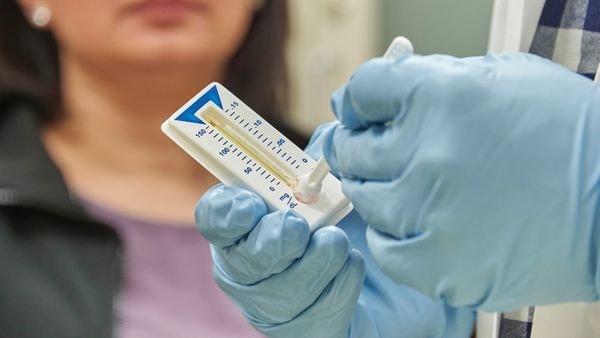DOT Drug & Alcohol Testing
Jennifer Loomis, Associate Editor
February 22, 2022

It’s easy to get lost in the weeds of drug and alcohol program testing requirements. If you don’t have a thorough understanding of when and whom to test, you risk putting drivers on the road who could be a danger to themselves and others. The requirements for drug and alcohol testing are set forth in Parts 40 and 382 of the Code of Federal Regulations. Part 40 spells out the testing processes and procedures, while Part 382 is specific to the Federal Motor Carrier Safety Administration (FMCSA) and specifies who should be tested and when.
Who should be tested?
If you employ drivers who operate a commercial motor vehicle (CMV) that requires a commercial driver’s license (CDL), then you must have a Department of Transportation (DOT) drug and alcohol testing program. Those who must be tested include anyone operating a CDL CMV under your authority, whether intra- or interstate. Don’t forget to include drivers from staffing services and leased owner-operators, part-time and seasonal drivers, drivers with other job titles (e.g., technicians, managers), and backup drivers. Also included in this group are volunteers and government employees. Independent, for-hire owner-operators are subject to DOT testing but require the assistance of a consortium/third-party administrator (C/TPA) to carry out the random testing portion of the testing program.
When is testing required under Part 382?
There are six situations in which a driver may be required to take a drug and/or alcohol test:
- Pre-employment: Before operating a CMV for you for the first time or when returning to the random testing program after an absence (unless an exception applies);
- Post-accident: When certain criteria is met after a crash;
- Random: As part of your regular random drug and alcohol testing program;
- Reasonable suspicion: If a trained supervisor has witnessed first-hand the appearance, behavior, speech, or body odor of a driver that raises concern;
- Return-to-duty: After completing the treatment and/or training prescribed by a substance abuse professional (SAP) after a violation;
- Follow up: For a duration of one to five years after a DOT drug or alcohol violation.
A five-panel drug test that screens for marijuana, cocaine, amphetamines, phencyclidine (PCP), and opioids is used for all testing situations. The DOT only allows urine to be tested for drugs. Alcohol testing is conducted on a saliva or breath specimen. A blood alcohol concentration (BAC) of .04 or higher is a DOT violation. Alcohol testing can only be conducted immediately before, after, or during the employee’s performance of safety-sensitive functions.
How often should drug and alcohol policies be reviewed?
If you have drivers subject to drug and alcohol testing, you are required to provide them with information about, among other things, the test types, testing process, and potential consequences of a positive drug or alcohol test. If your company also has a drug and alcohol policy based on the independent authority of the motor carrier that is applied to the DOT testing program (e.g., zero-tolerance), you must also provide employees with a copy of that policy. It is your responsibility to keep your policies up to date if something in the policy changes, or if contact information, such as the name and number of the designated employer representative (DER), has changed. It is best practice to review your drug and alcohol policy information at least yearly to evaluate if any changes need to be made.
While the Federal Motor Carrier Safety Regulations (FMCSRs) don’t require carriers to provide employees with a new copy of the policy when changes are made, it is best practice to notify employees of the change and provide them with an addendum to the original policy.
What role does the Clearinghouse play?
The CDL Drug and Alcohol Clearinghouse is the database where all Part 382 drug and alcohol violations are stored. By conducting a query of the system, you will learn of drivers’ unresolved violations (meaning they haven’t gotten as far as the return-to-duty test) and outstanding steps that drivers may need to take in the return-to-duty or follow-up testing process. You will also be able to see if a driver has completed the entire process, as that information is kept in the Clearinghouse for five years or until the process is completed, whichever is longer.
Your role is the most important
Drug and alcohol testing is used to identify drivers who cannot safely perform their job functions and to improve motor carrier safety. The program only works, though, if you regularly test your drivers and promptly enter specific violations into the Clearinghouse. A well-run testing program, well-crafted drug and alcohol policy, and regular use of the Clearinghouse will allow you to identify those in need of rehabilitation so that they can get the support they need to get sober and back on the road.
To learn how J. J. Keller can help manage your Drug & Alcohol Testing Program, contact us today at 888.473.4638.